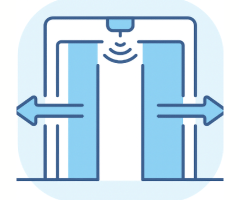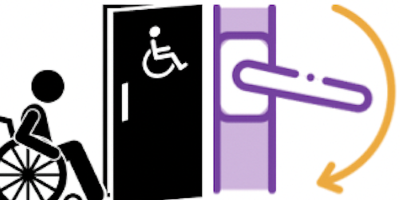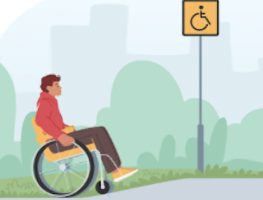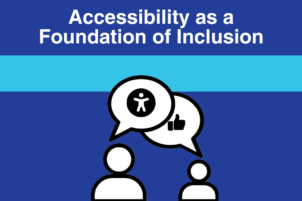The term Universal Design is increasingly common in conversations around accessibility, but what exactly does it mean? Universal Design is the configuration of a space or environment so it can be accessed, used, and understood by the greatest number of people, regardless of their size, age, or ability. This concept ensures buildings, parks, homes, and public transportation are approachable and inclusive for all.
Seven principles of Universal Design were developed in 1977 by a working group of architects, product designers, engineers, and environmental design researchers, led by the late architect Ronald Mace of North Carolina State University. These principles can be applied to update existing designs or guide the creation of new designs.
Principle 1: Equitable Use
 The design is useful and marketable to people of all abilities, providing the same means of use for all users. For example, powered doors with sensors automatically open when someone approaches, eliminating the need to pull or push open the door.
The design is useful and marketable to people of all abilities, providing the same means of use for all users. For example, powered doors with sensors automatically open when someone approaches, eliminating the need to pull or push open the door.
Principle 2: Flexibility in Use
 The design accommodates a wide range of individual preferences and abilities by providing multiple usage methods. For instance, closed captions on a video allow users to access auditory content visually.
The design accommodates a wide range of individual preferences and abilities by providing multiple usage methods. For instance, closed captions on a video allow users to access auditory content visually.
Principle 3: Perceptible Information
 The design communicates necessary information effectively to the user through multiple methods—verbal, visual, and tactile—so it is understandable regardless of ambient conditions or the user’s sensory abilities. For example, a fire alarm flashes a light and makes noise so individuals can understand what is happening and respond safely and quickly.
The design communicates necessary information effectively to the user through multiple methods—verbal, visual, and tactile—so it is understandable regardless of ambient conditions or the user’s sensory abilities. For example, a fire alarm flashes a light and makes noise so individuals can understand what is happening and respond safely and quickly.
Principle 4: Simple and Intuitive Use
 The design is easy to understand, regardless of the user’s experience, knowledge, language skills, or focus. An example would be a smartphone interface with clear icons and minimal text to ensure that users can navigate it easily.
The design is easy to understand, regardless of the user’s experience, knowledge, language skills, or focus. An example would be a smartphone interface with clear icons and minimal text to ensure that users can navigate it easily.
Principle 5: Tolerance for Error
 The design minimizes risks and reduces the consequences of accidental or unintended actions. For example, a hallway free of protruding objects such as tables, chairs, or large plants reduces the risk of tripping or injury.
The design minimizes risks and reduces the consequences of accidental or unintended actions. For example, a hallway free of protruding objects such as tables, chairs, or large plants reduces the risk of tripping or injury.
Principle 6: Low Physical Effort
 The design can be used efficiently and comfortably with minimal fatigue, avoiding repetitive actions or sustained physical effort. An accessible push plate that automatically opens a door, or lever door handles that require less strength to operate, are excellent examples.
The design can be used efficiently and comfortably with minimal fatigue, avoiding repetitive actions or sustained physical effort. An accessible push plate that automatically opens a door, or lever door handles that require less strength to operate, are excellent examples.
Principle 7: Size and Space for Approach and Use
 The design ensures appropriate size and space for approach, reach, manipulation, and use, regardless of the user’s body size, posture, or mobility. Examples include curb cuts on a sidewalk and ramps for public buses.
The design ensures appropriate size and space for approach, reach, manipulation, and use, regardless of the user’s body size, posture, or mobility. Examples include curb cuts on a sidewalk and ramps for public buses.
Normalizing universally designed spaces helps break down social and economic barriers for the disabled community. It also ensures that disabled individuals can participate in all aspects of community life.
If you want to learn more about Universal Design and how to make your business accessible to everyone, reach out to Disability Belongs™!






